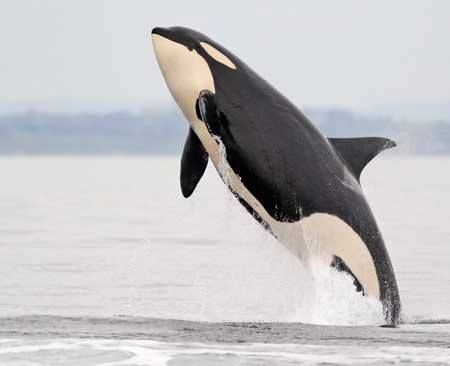The cause of death has yet to be determined, but the demise of yet another member of the Southern resident killer whales marks a new low point for a population that shows little, if any, sign of recovery.
The body of J-32, an 18-year-old female, was found Thursday, Dec. 4, near Courtenay, British Columbia, roughly 70 miles north of the city of Nanaimo, on Vancouver Island. Results of a necropsy performed two days later reveal that the orca was carrying a near full-term baby at the time of its death.
The orca is believed to have died no more than two days before its body was discovered.
The death of J-32, also known as Rhapsody, stands as the second loss for the “endangered” population in about a month, and the fourth in 2014.
Equally alarming for many killer whale advocates is that the Southern residents have not had a newborn in more than two years that has survived for more than two months.
The population now totals 77, a 30-year low.
“This is dire,” said Ken Balcomb, director of San Juan Island-based Center for Whale Research. “We should have had eight babies in that two years time. Obviously, you can’t have a population without any recruitment.”
Listed endangered in the U.S. in 2005, the southern residents consist of three tightly knit clans, J, K and L pods. The population was afforded protection under federal law in the wake of a 20 percent decline in the mid 1990s. As of 2010, the population totaled 87 animals. The southern Residents are designated endangered by Washington state and in Canada as well.
In mid-October, the population’s only newborn in nearly two years, L-120, first spotted Sept. 6, vanished and has not been seen since. Its mother and other members of its family have been identified and photographed since the birth of L-120, but unaccompanied by the calf.
J-32 was last identified and photographed by the Center for Whale Research in late November, near Victoria, at the south end of Vancouver Island. It was among fellow J-pod members at that time. Researchers speculated that the female was in late stages of pregnancy this past summer because of a wider-than-normal girth that was visible when it breached.
Balcomb, who attended the Dec. 6 necropsy, said that J-32 appears to have died from complications that arose, possibly an infection, after the baby it was carrying died in the womb.
The female’s uterus, where remains of the near full-term baby were lodged, was removed for further examination. Results of that study should reveal whether J-32, which had not before given birth, had any prior miscarriages, he said.
J-32 was two years old when its mother died, in 1998. The young killer whale was then raised by an aunt, J-22, also known as Oreo. Two J-pod cousins, J-34, Doublestuff, and J-38, Cookie, and J-22, are the only remaining members of the J-10 matriline.




